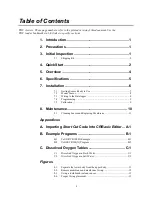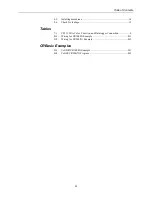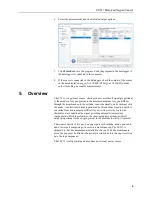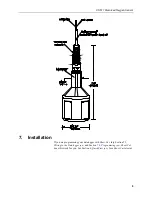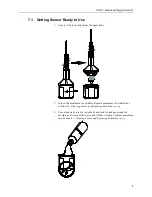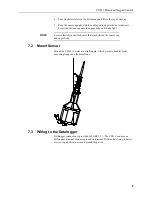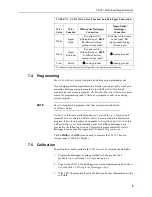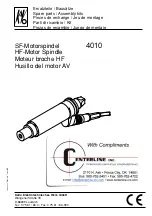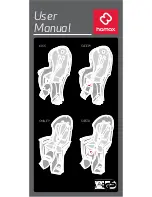
CS511 Dissolved Oxygen Sensor
10
4.
Place the CS511 in air away from direct sunlight with the membrane facing
upward.
5.
Place a drop of clean water on the membrane.
6.
Wait for readings to stabilize. This may take 15 minutes or more.
7.
Determine the air temperature and barometric pressure.
8.
Using a calibration chart such as that provided in Appendix
(p. C-1)
, determine the oxygen concentration of the air.
9.
Use the following equation to calculate the multiplier:
M = P/R
where:
M = Multiplier
P = Concentration in PPM of the air (from the calibration chart)
R = The signal output of the sensor when using a multiplier of one
10.
Change the multiplier in the datalogger program from one to the calculated
(p. 2)
), or Section
(p. 9)
).
Instead of step 10, the following expression can be used that allows a new
multiplier to be added to the program without rewriting, compiling, and
downloading the program to the datalogger.
CRBasic Expression for Entering Multiplier:
DOppm = DOMult * DOmV
With this method, the multiplier value is typed into the expression through the
Public Table by using the numeric display in
PC200W
,
LoggerNet
,
PC400
, or
datalogger keyboard display.
8. Maintenance
Campbell Scientific offers maintenance kits that contain membranes,
membrane O-rings, washers, and a bottle of electrolyte. A spare parts kit is also
available that contains two membrane locks, two tensioning washers, two body
O-rings, and one membrane replacement tool. Refer to
www.campbellsci.com/order/cs511-l
The CS511 uses a strong, easy-to-clean, and easy-to-change membrane in a
screw-on membrane cap. The sensor can be fully overhauled in five minutes.




